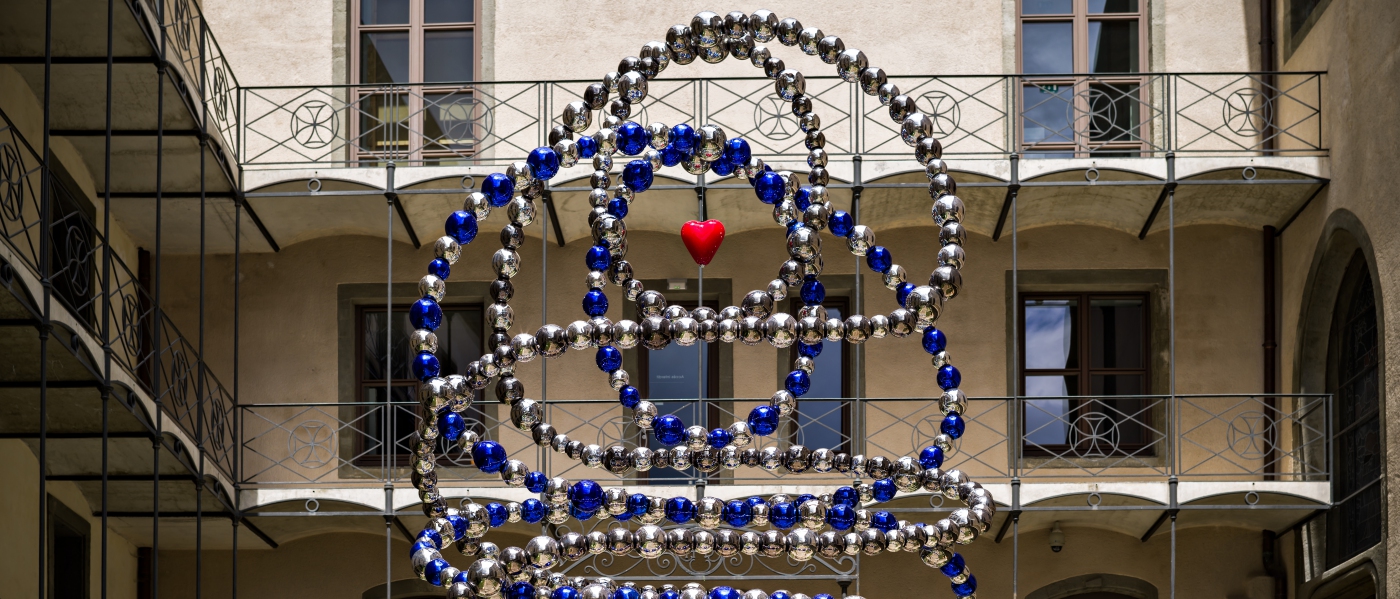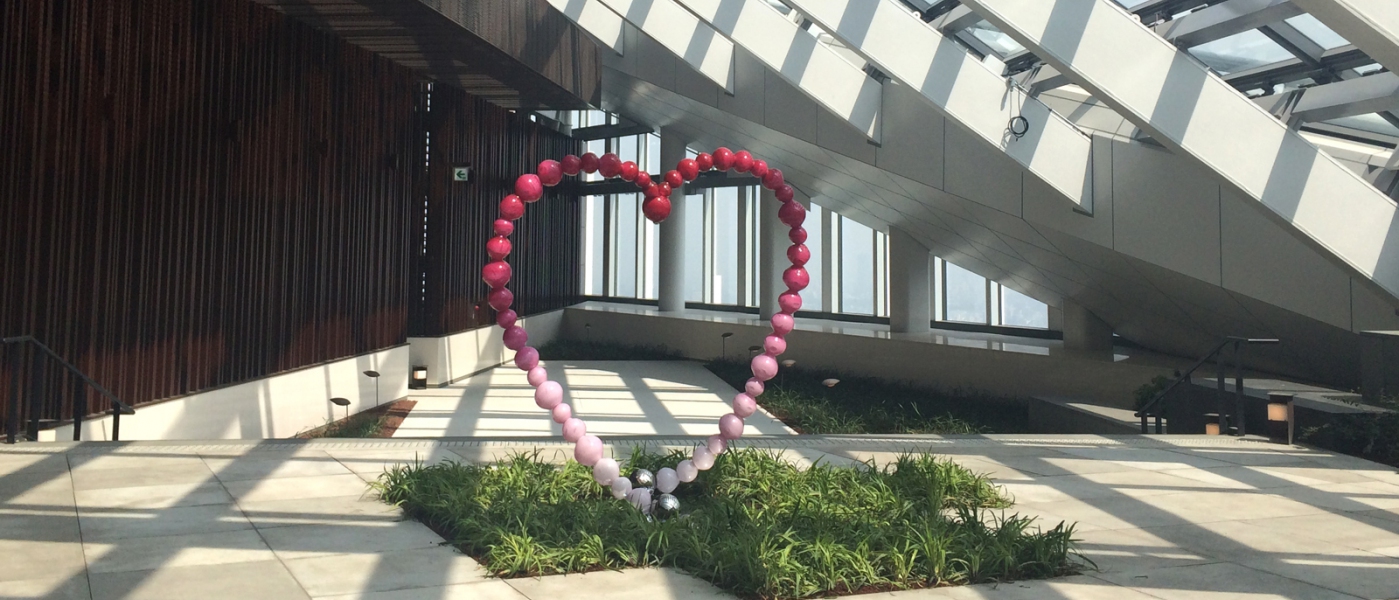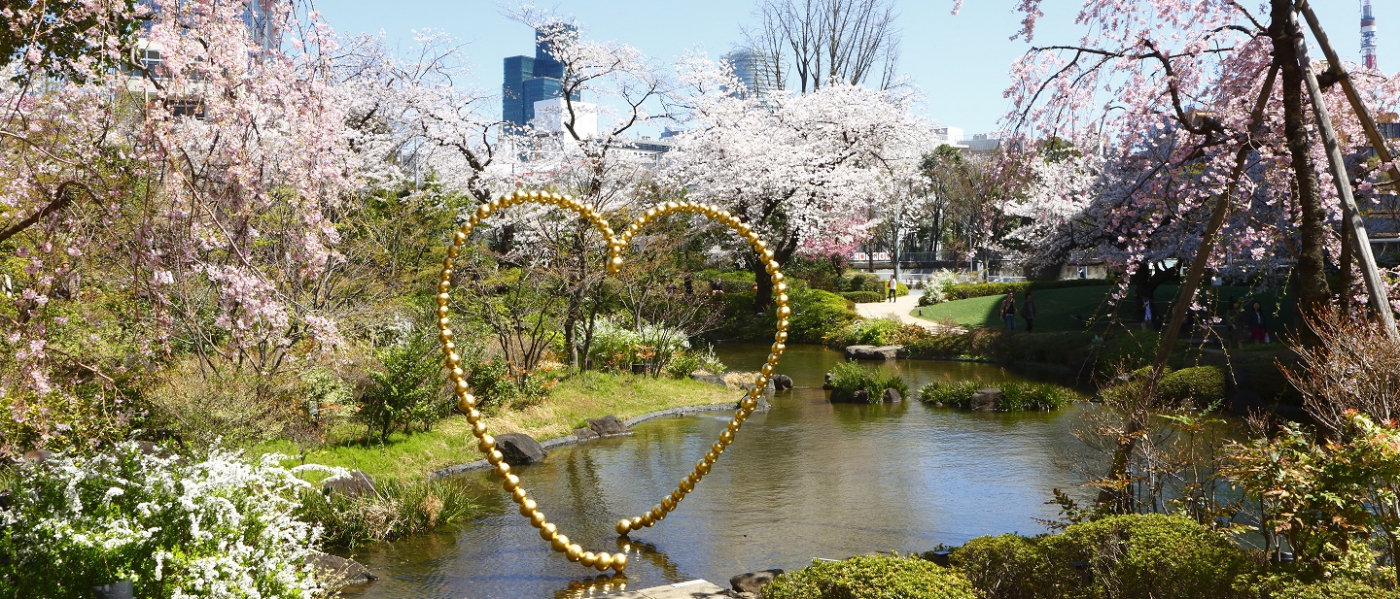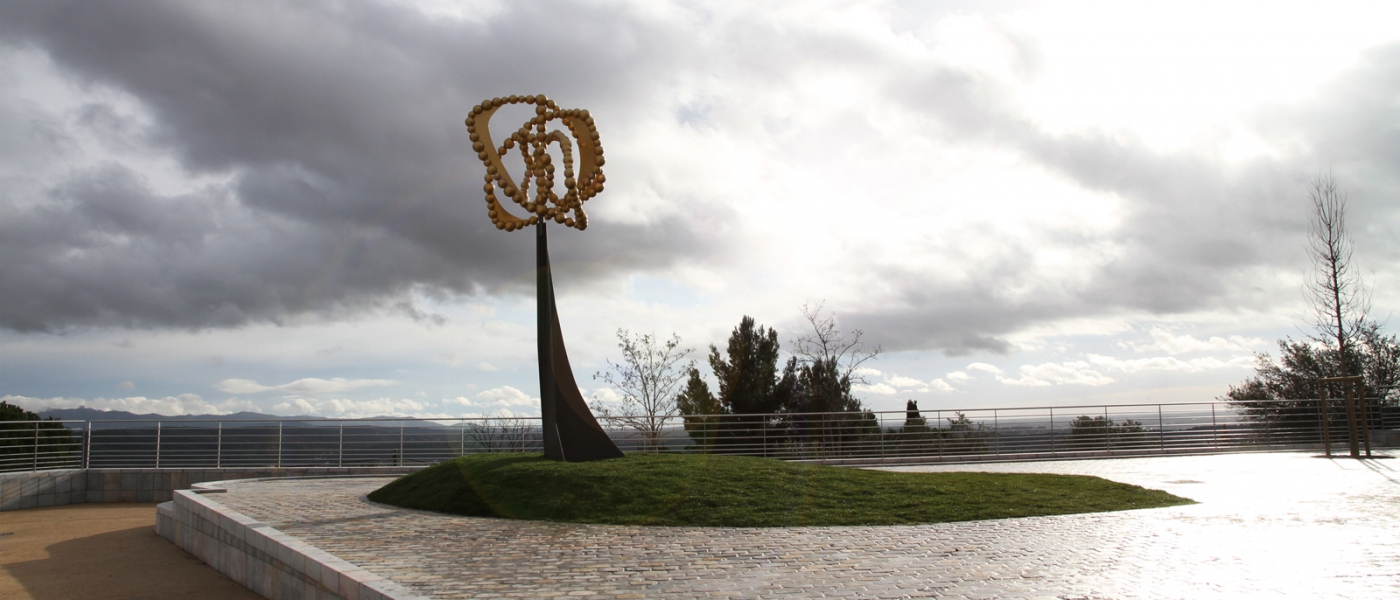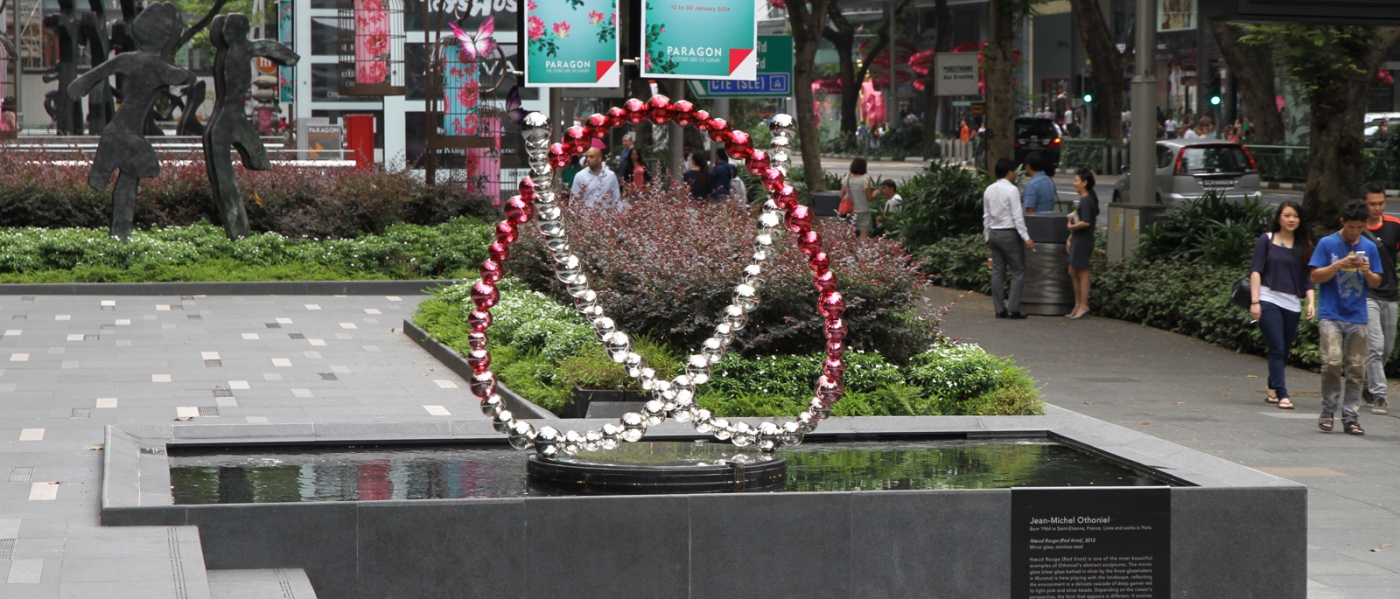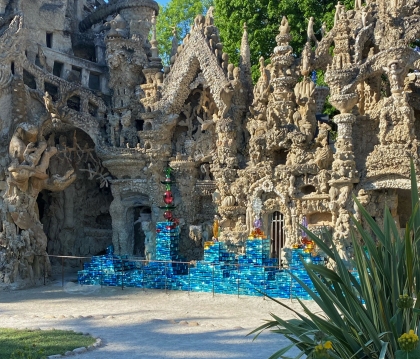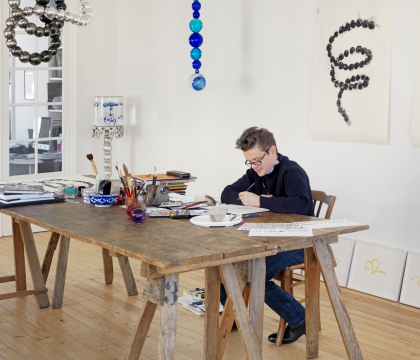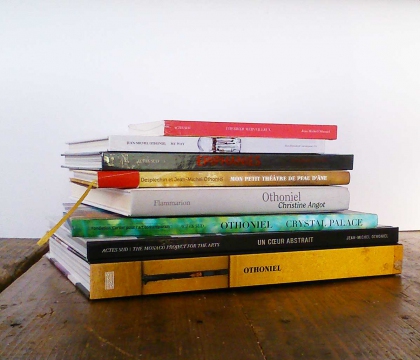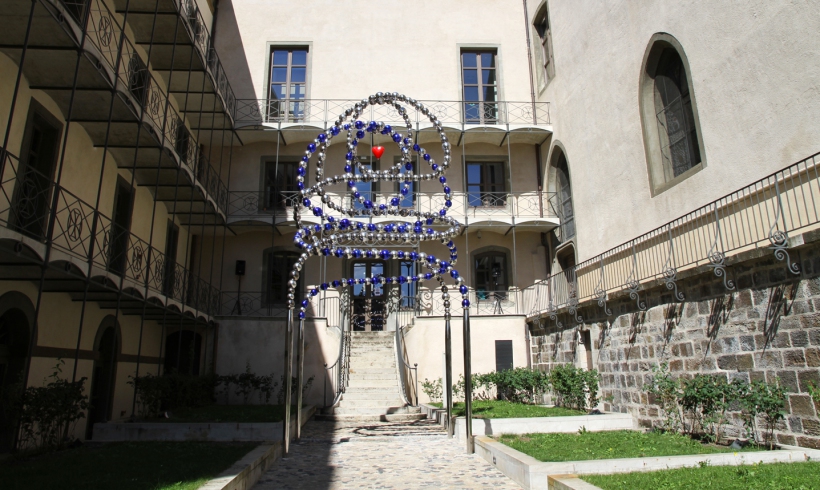
Le Cœur de l'Hotel-Dieu
September 2014, Le Puy-en-Velay
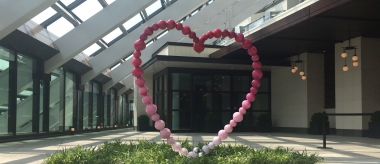
Kokoro-Ai
June 2014, Mori Art Museum, Tokyo, Japan
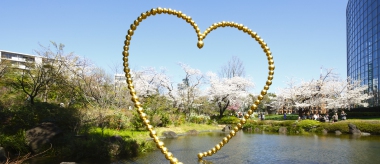
Othoniel, Kin no Kokoro
April 2014, Roppongi Hills, Tokyo, Japan
Le Cœur de l'Hotel-Dieu
September 2014, Le Puy-en-Velay
Discover the artworkThe year 2014 represented a historic step in the Puy-en-Velay commune. Elected officials from the urban areas incorporated contemporary art into its cultural program, inviting renowned sculptor Jean-Michel Othoniel to present his work and create a permanent installation.
Following an exhibition at the Hôtel-Dieu museum, inaugurated on May 29, 2014, a monumental sculpture was installed in the gardens of Hôtel-Dieu, which is the starting point on the pilgrimage towards Saint-Jacques-de-Compostelle, registered as a UNESCO World Heritage Site.
Entitled The Heart of the Hotel-Dieu, Othoniel's architectural sculpture was commissioned by the government. Measuring 7 meters high, it consists of 4 aluminium legs, 461 blue and grey stainless-steel beads and a red Murano-glass heart. It recalls the historic lace-makers in Puy-en-Velay, the multi-coloured lava stones gracing the cathedral facade, and the tradition of Hôtel-Dieu itself, a place of charity and hospitality.
Kokoro-Ai
June 2014, Mori Art Museum, Tokyo, Japan
Discover the artworkKokoro-Ai
To celebrate the opening of Andaz Tokyo in Toranomon Hills, Jean-Michel Othoniel installed Kokoro-Ai, a permanent sculpture at the top of the Toranomon Hills Tower on the 52nd floor. Commissioned as part of an urban project revitalizing the Toranomon district, the work reintroduced Othoniel to the shifting Tokyo cityscape; the previous year, in April 2013, his sculpture Kin no Kokoro was installed in the Roppongi Hills Mohri Garden.
With Kokoro-Ai, Jean-Michel Othoniel created a heart in subtle shades of opalescent pink formulated especially for the work. Shifting from delicate rose to deep magenta, the colors evoke notions of spring, rebirth and blooming, and gracefully suggest a sense of promise.
Kokoro-Ai, an image of budding romance, continues Othoniel's series of installations in Japan, as if he were plotting a map of love throughout Japan. Kokoro, installed in 2009 at the Hara Museum / ARC in Gunma, is a monumental heart of blown Murano glass beads, coloured dark red to symbolize passion; Kin no Kokoro, in the Morhi Garden of Tokyo, is a heart of bronze beads covered with gold leaf, which give it a sacred dimension.
The majestic Kokoro-Ai overlooks the city and creates an ongoing dialogue with the architecture, in keeping with Othoniel's intentions to inscribe his works in spaces that resonate for him, whether historical sites or contemporary buildings.
Kokoro-Ai has become a symbol of this revitalized Toranomon district, the vibrant heart of Tokyo. As with his installation Le Kiosque des Noctambules (2000) near the Louvre Museum in Paris, Jean-Michel Othoniel invites the public to invent their own rituals there and invest his work with personal significance, by exchanging vows, making promises or sharing secrets, so that their interaction with the sculpture inspires emotion and wonder.
Othoniel, Kin no Kokoro
April 2014, Roppongi Hills, Tokyo, Japan
Discover the artworkOthoniel, Kin no Kokoro
To celebrate the 10th anniversary of the Mori Art Museum and the Roppongi Hills complex in Tokyo, a monumental sculpture by Jean-Michel Othoniel was permanently installed in the Mohri Garden, at the foot of the famous Mori Tower.
Entitled Kin no Kokoro, this heart in golden bronze, inspired by the Roppongi Hills logo, has become emblematic of the district. "We wanted to install this new work in a public space on the occasion of the exhibition All You Need Is LOVE: From Chagall to Kusama and Hatsune Miku, which marks the tenth anniversary of Roppongi Hills and Mori Art Museum. Not only because the artwork is beautiful but also because it symbolizes the theme of love for the anniversary of Roppongi Hills. In addition, its form and scale are perfect for a public space," said Fumio Nanjo, director Mori Art Museum.
This ode to the universality of love was carefully designed to respect the constraints of the land and its potential for earthquake, but also to echo traditional savoir-faire, which is extremely important in Japan. An abstract heart nearly 4 meters high, the sculpture is a metaphor for love, a universal symbol that is both fragile and powerful. Its shape changes depending on the viewer's position. Several locations were proposed to Othoniel, including a spot next to Louise Bourgeois' giant spider. Ultimately, the artist selected a spot by the pond in the old, historic Mohri garden, the oldest in the city, near the base of the Mori Tower. "I feel that in Japan, the gardens bind young people to their history and culture, much more than in the West. It is this feeling that I wanted to approach in Kin no Kokoro: to propose a work that addresses several generations."
Othoniel's work has been presented in numerous solo and group exhibitions in Japan, including Setagaya Art Museum and the Nagoya City Art Museum in 1999, and at the Museum of Contemporary Art Tokyo in 2006. More recently, his work was also shown at the Contemporary Art Museum of Hara in 2012, and at the Karuizawa New Art Museum in 2014.
La Rose des vents
February 2014, Cité Besson, Aix-en-Provence, France
Discover the artworkLa Rose des vents
When Jean-Michel Othoniel first met with the inhabitants of the Beisson district (Aix-en-Provence, South of France), they seemed nostalgic about the old windmill that had been the emblem of their city, now disappeared. Moved by their stories, the artist offered them a new symbol for a hometown that is in perpetual transition.
Playing with light and wind, animating the earth with moving shadows or reflecting the sky with his golden mirror beads, La Rose des vents (The Compass Rose) is a mobile sculpture that shifts with the mistral, the north wind or soft breezes, recalling the rich Provençal language that evokes the gentle wind on cypress trees. His sculpture was inspired by the desert rose, crystals forming a circular cluster, that looks as fragile as glass - one of the artist's favorite materials since the 1990s, when he was an artist-in-residence at the CIRVA glass workshop in Marseille. As its name implies, the desert rose cluster resembles a rose, a flower that is an important symbol for Othoniel.
The mobile continues Othoniel's series of knots and serpentine forms, several of which were presented at the Musée Granet in 2013. Here, he takes a new direction by introducing motion, which until then was suggested only by his works' dynamic shapes and has now become integral to their poetry.
The sculpture's design suggests calligraphy in space, its shape shifting with the viewer's position and the direction of the wind. Although 6 meters high, this monumental work appears delicate and light. As with many of his monumental public commissions, Jean-Michel Othoniel hopes his work will become a signpost overlooking the city, a meeting place that recalls the site's architectural heritage, but also opens it to the future.
Le Noeud Rouge (Red Knot)
January 2014, Paragon, Singapore
Discover the artworkLe Noeud Rouge (Red Knot)
Transformations, material metamorphoses, rites of passage from one state to another, journeys and memory... these themes are essential to Othoniel's work. Fascinated by glass and its ability to change its shape and properties through heating and cooling, he strings together hand-blown beads to make large-scale necklaces that are both fragile and monumental.
Looking closely, one sees the glass is scarred with delicate marks that mar its otherwise perfectly polished surface. These scars serve as a reminder that suffering, violence and despair can come from beauty.
Nœud Rouge (Red Knot) is part of Othoniel's recent, more abstract series of sculptures, conceived as volumes that evoke absence and suggest curled-up bodies. The series was inspired by the writings of the psychoanalyst Jacques Lacan; in particular, on his research on Borromean rings (three interlaced circles), which serve as a model for human subjectivity and the fragile equilibrium between the Real, the Symbolic and the Imaginary. For the sculpture, Othoniel used the technique of mirrored glass (transparent glass bathed in silver). Shapes on the sculpture's surface shift depending on the viewer's position; the work is in perpetual evolution, as if the knots were neverending.
